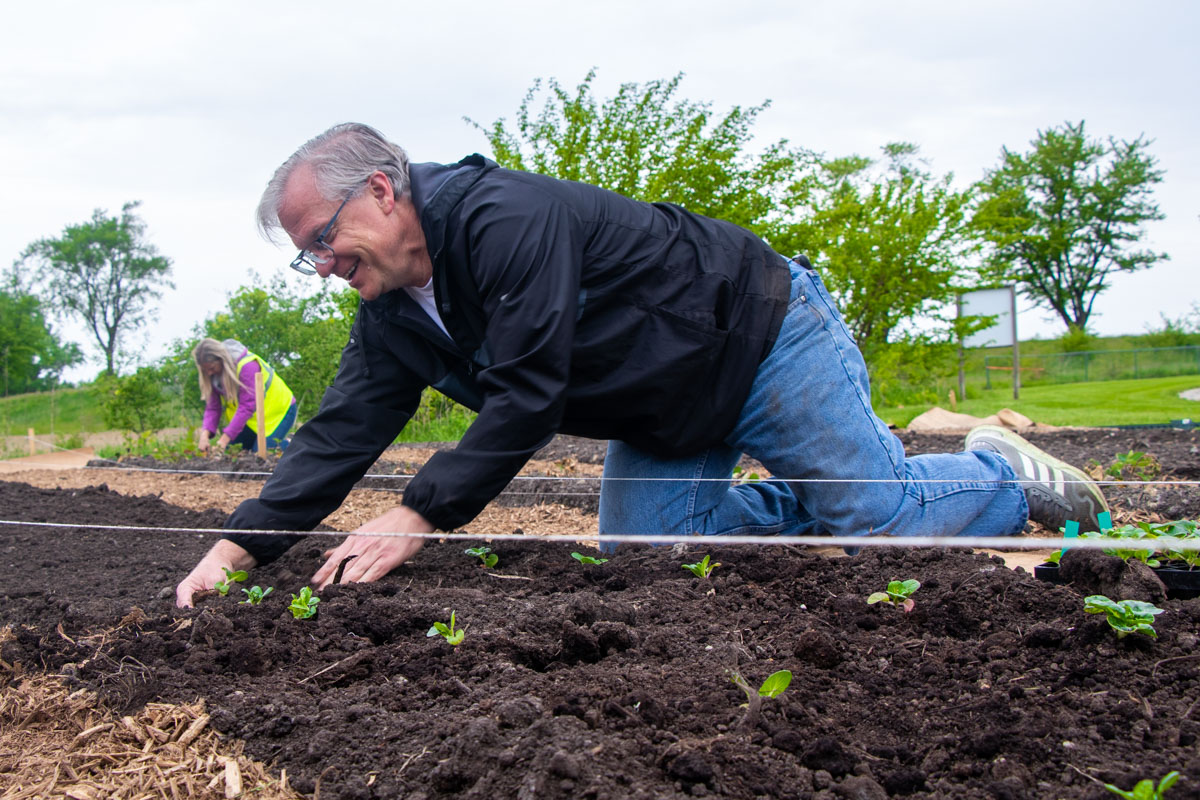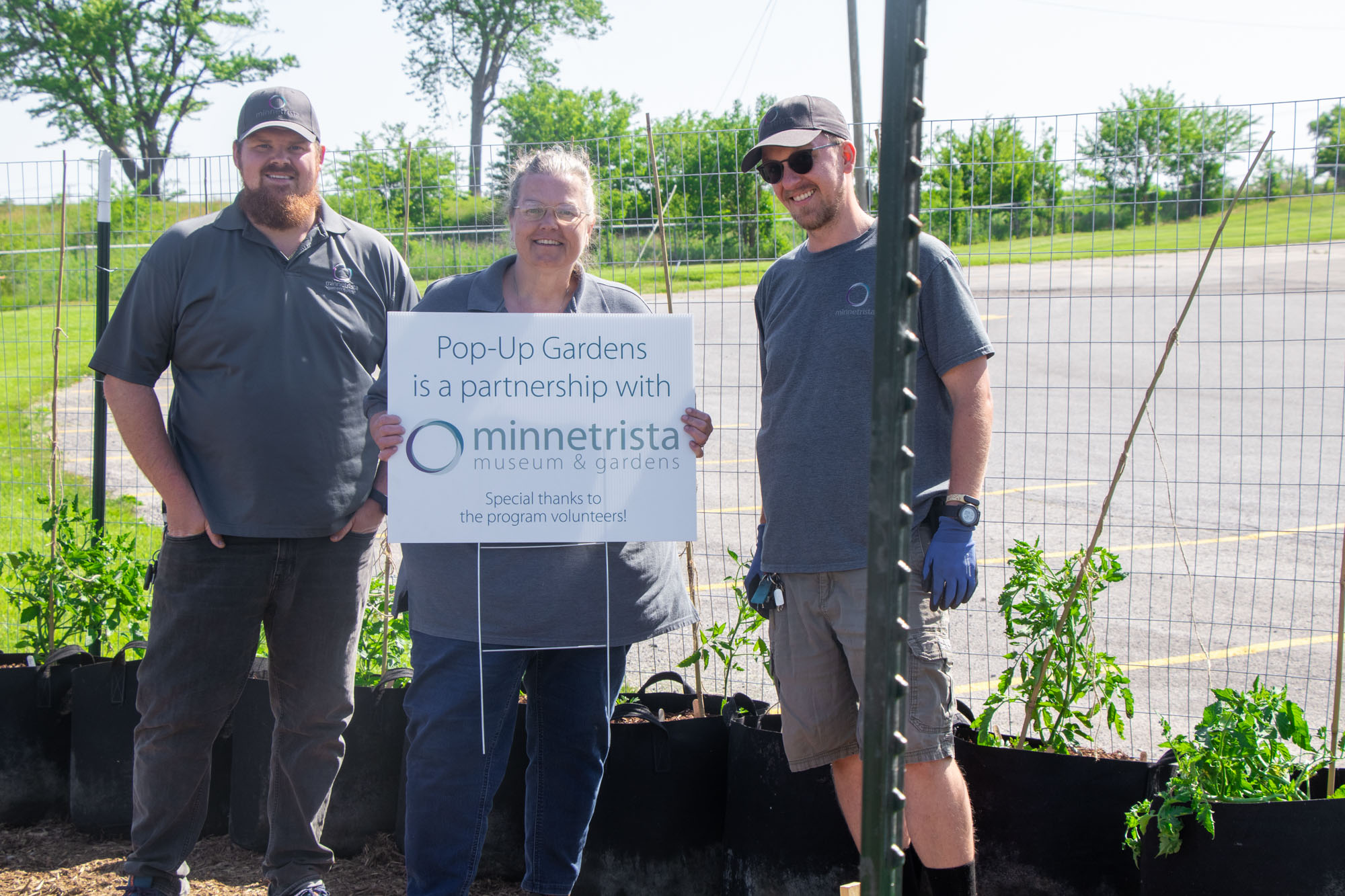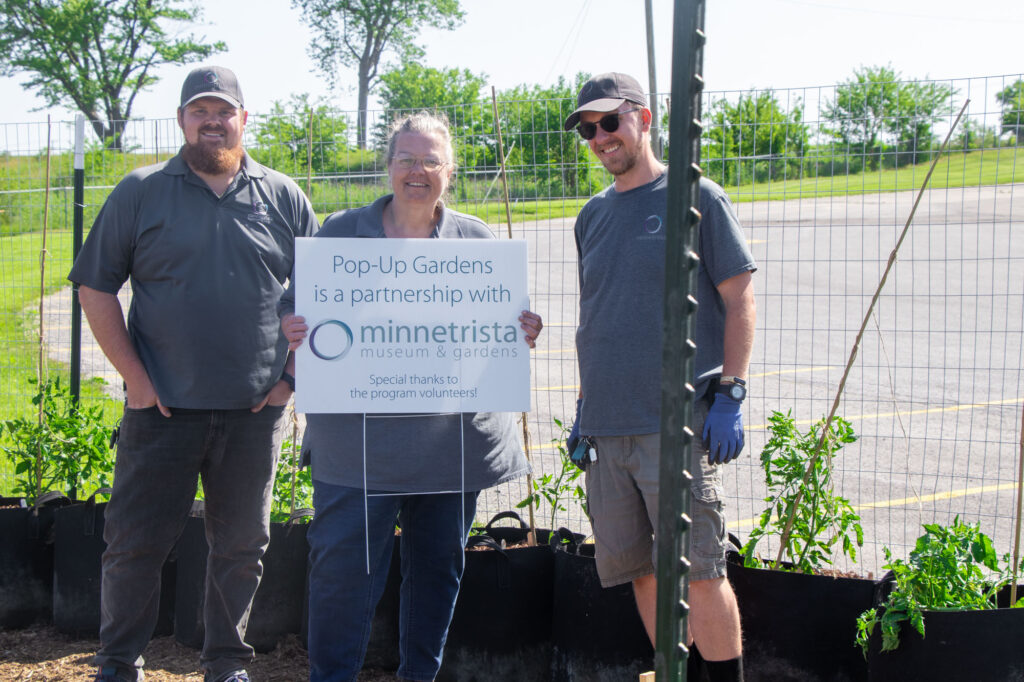By Peter Kamajian
Our mission as a food bank is to provide the community with help for today and hope for tomorrow, and one of our most exciting new developments will accomplish just that. Our growing Teaching Garden embodies our mission: Growing food that ends up on neighbors’ plates is the obvious “help for today;” the “hope for tomorrow” comes from using the garden to teach people how to grow their own food. Volunteers and neighbors who want to learn about cultivating their own self-sustaining food source can come to the garden and gain valuable knowledge on the topic, taking it home to keep themselves and their families fed.
From humble beginnings in a cordoned-off square by the field, our plan is to fill it with produce—once we get the necessary equipment. After tiling the field and installing a well for irrigation, our sustainable garden will be at full scale! As of right now, we currently maintain a teaching garden where neighbors can learn sustainable food sourcing; in the future, we plan to grow all sorts of produce meant for consumption and distribution.
 Volunteers from Monroe Central, TeenWorks, First Merchants Bank, and more have had a hand in making our garden a reality.
Volunteers from Monroe Central, TeenWorks, First Merchants Bank, and more have had a hand in making our garden a reality.
While an excellent way to bring in volunteers and connect with the community, sustainability is the main goal of this project. Growing food in the same area we prepare and distribute it massively cuts down on costs and emissions from having it delivered; it also gives us more control over what food is available to us! This means we can get more people more of their favorite produce, fresh. It also allows us to support local organizations like Grow-A-Row, which offers a way for everyone to grow food for their neighbors.
The garden was made possible in part by Minnetrista, who also educate the community on gardening via their pop-up gardens. These take-home horticultural housewarmers are the perfect starting project for new gardeners still ripening their green thumb. Additional funding for these ambitious expansions has been provided from our incredible sponsors and volunteers.
 This garden has been made possible thanks to overwhelming community support – it takes a village to raise a tomato!
This garden has been made possible thanks to overwhelming community support – it takes a village to raise a tomato!
Did you know that crops meant for humans are called “specialty crops?” Does that seem weird to anyone else? Kellie Arrowood, Volunteer Program Manager and garden mastermind, suggests these should be known as “standard” or even “essential” crops. While we currently grow fewer “essential crops” than we’d like to, our plans include rows of tomato, watermelon, onion, potatoes, peppers, and cucumber, as well as any seasonal crops we see fit—stay tuned for more delicious developments!
Our community garden sits right on the intersection of sustainable food sourcing and community involvement, and we couldn’t be happier to invite our neighbors in to help it grow. Expect to see yet more crops around our campus in the coming seasons, and get ready for some extra-fresh produce to arrive at a meal near you.


